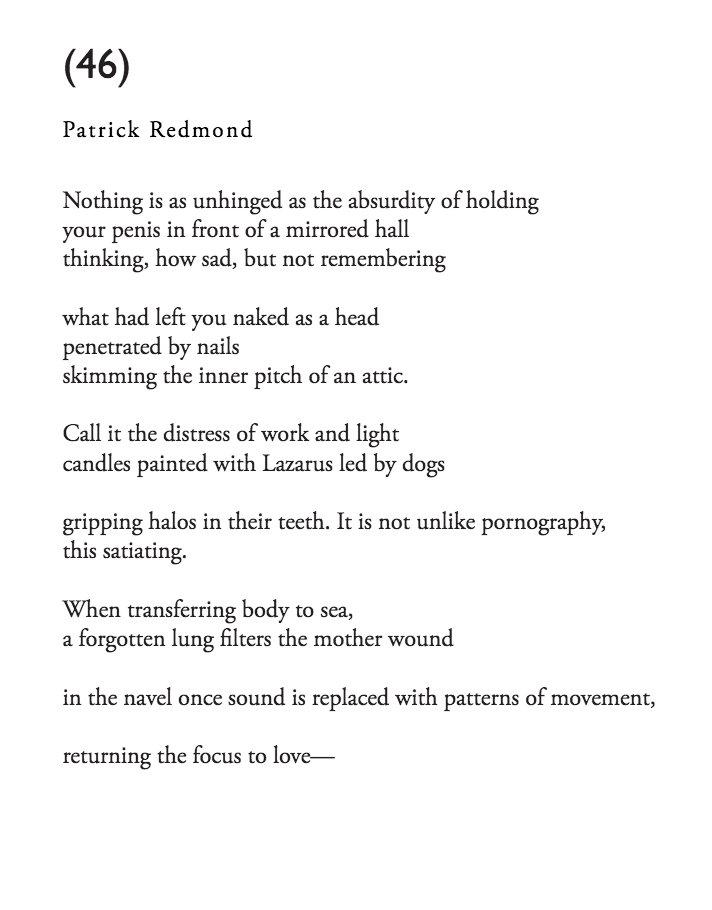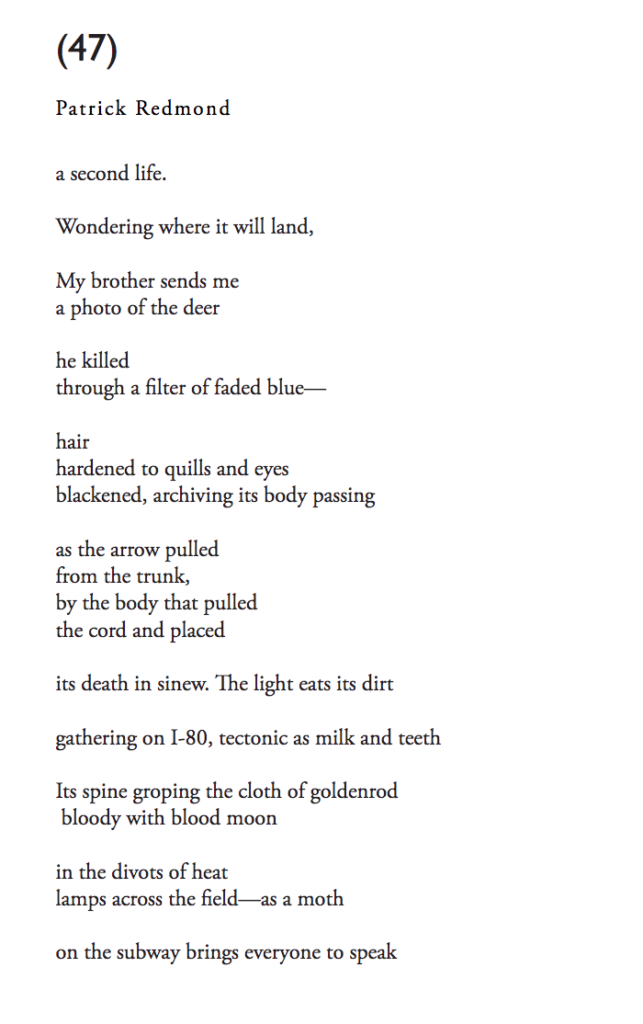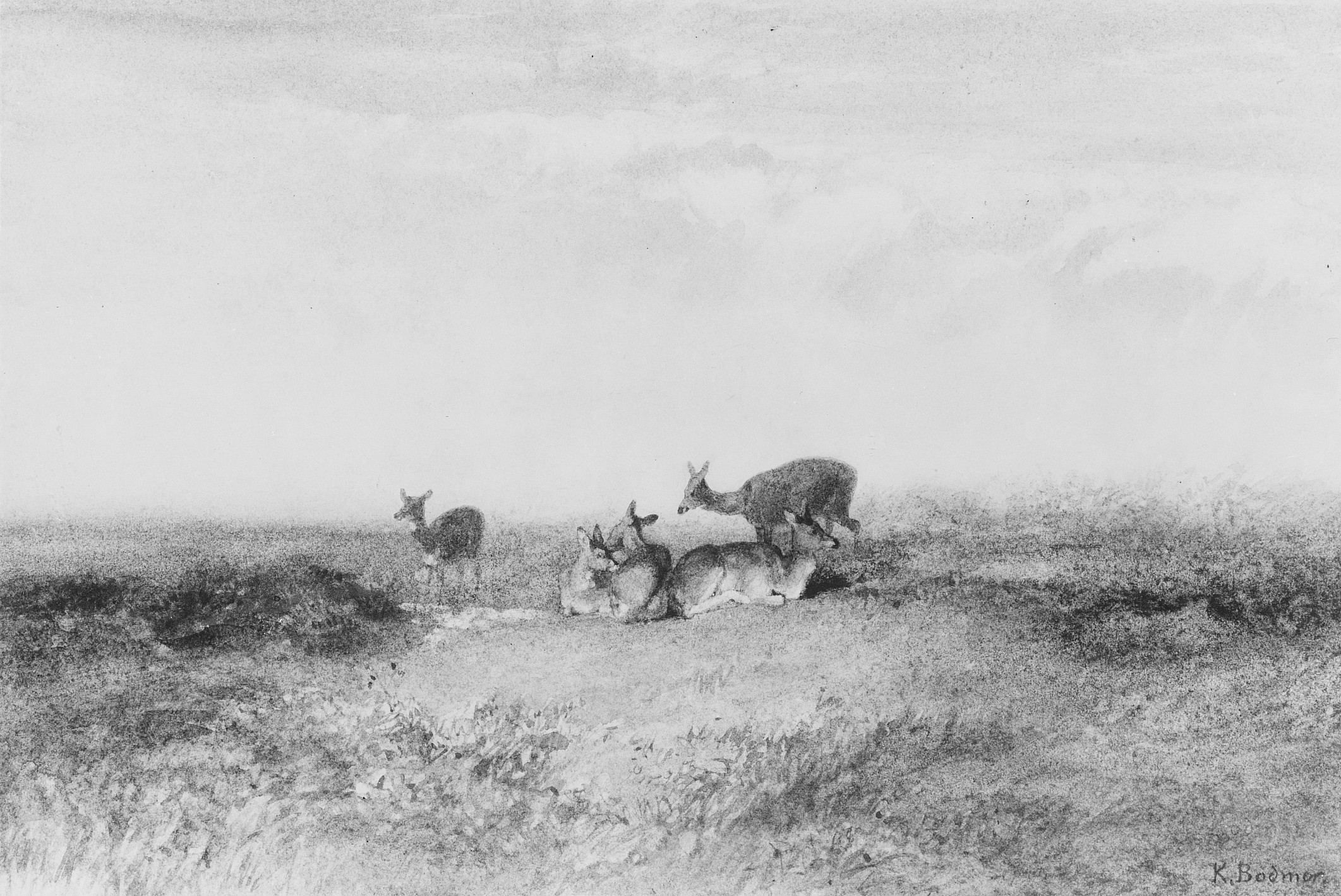The Close Reading Series invites our board editors to write about a favorite piece from our Spring 2020 issue. These readings are not intended to be definitive interpretations; when we read, we bring with us our own histories, experiences, and references, all of which guide our relationship to the work before us. It is possible, even probable, that the meanings our editors found in these pieces will be different from your own, and perhaps even different from the authors’ intentions. We hope that these close readings will demonstrate what we loved about these pieces, and encourage you to find things to love about them as well.
This week, Editor-in-Chief Sofia Montrone discusses “(46)” and “(47).”


Both of Patrick Redmond’s extraordinary poems hinge on the manipulative quality of images. In “(46)” there is the “mirrored ball” – a surface the distorts, even as it reflects – while in “(47)” the image of the slain deer is presented “through a filter of faded blue.” I am particularly struck by this detail about the filter, which, for me, conjures an entire, tacit context for the piece. I imagine one of those gaudy Instagram filters that overpaints an image with color and frames it with streaky lines in an attempt to make the photo, taken on a cellphone, seem more artistic and individual. My initial instinct, upon reading this piece, was to feel that the deer’s death was cheapened by the filter – transformed into an occasion for the brother to brag about his conquest. Now, I’m not so sure. As I have reread this poem over the intervening months, I have come to wonder if the brother’s intentional manipulation of the image is an attempt to imbue the death with a meaning beyond pure sport, and if the poem itself is an extension of this aspiration. Is the language of the poem not just another filter through which we confront the event? A way of controlling its image?
The images themselves are assertive and strange. I am impressed by the confidence with which Redmond describes the sensation of being “naked as a head/ penetrated by nails/ skimming the inner pitch of an attic” and the way “the light eats its dirt/ gathering on I-80, tectonic as milk and teeth.” The poems prowl forward, their movements graceful yet unexpected. Perhaps their most surprising turns come at the conclusions, which seem lift into a different register, “returning the focus to love.” Just as the “moth/ on the subway brings everyone to speak,” the poems invite us to follow a new, more hopeful train of thought, even past the page’s limit.
Read more of our Spring Issue here.

